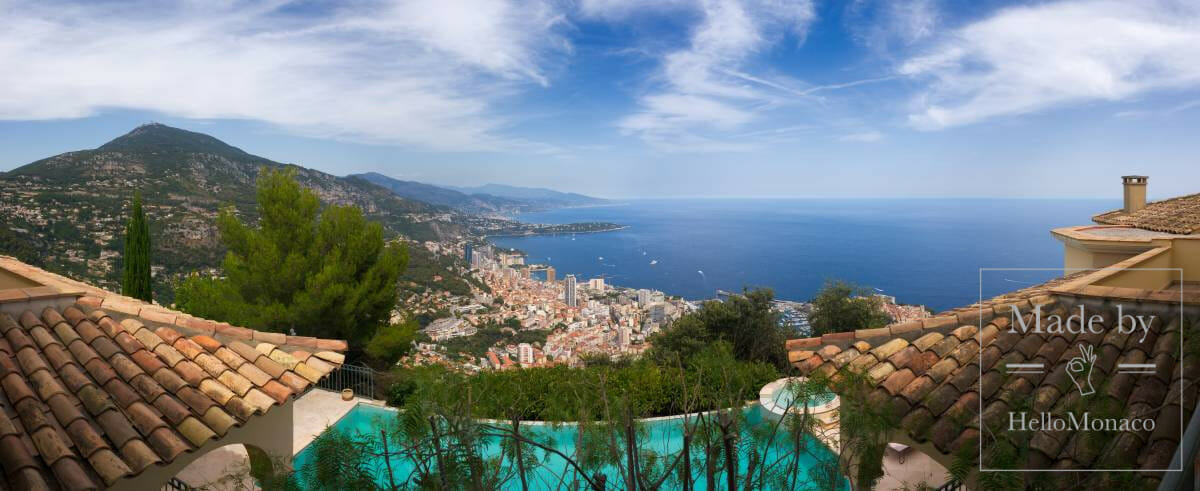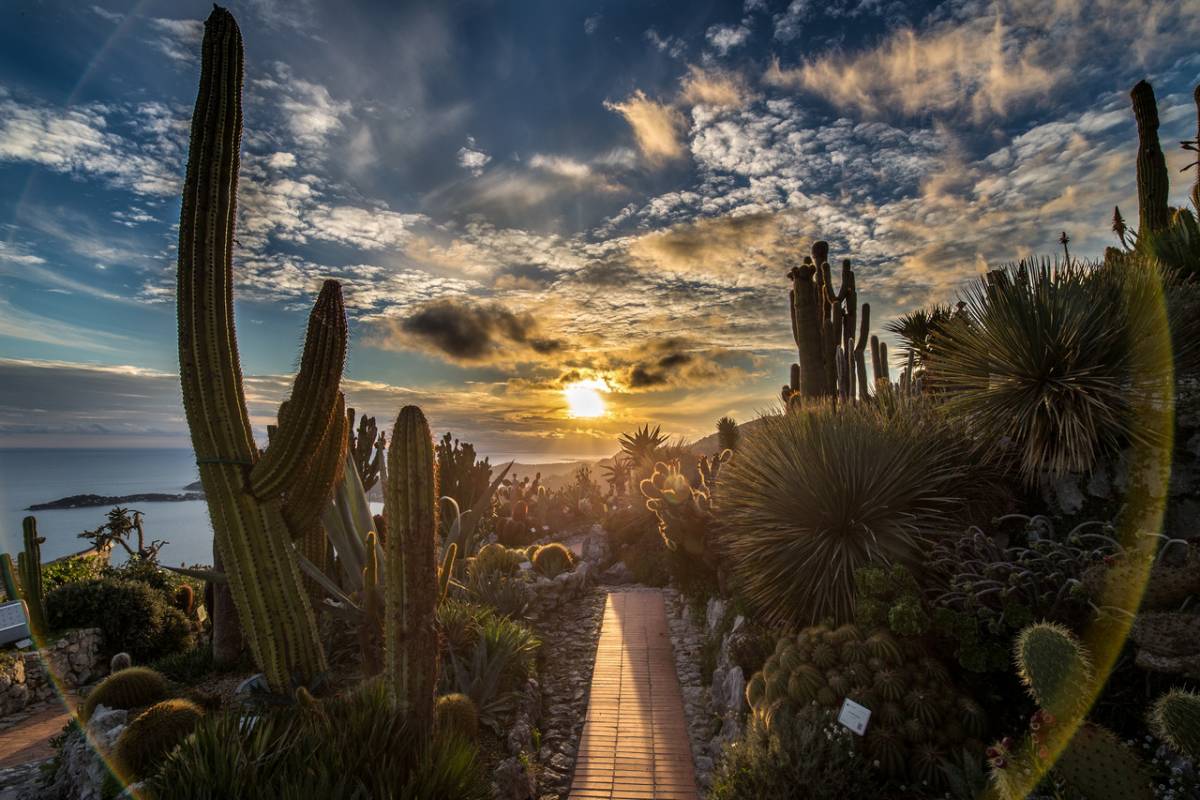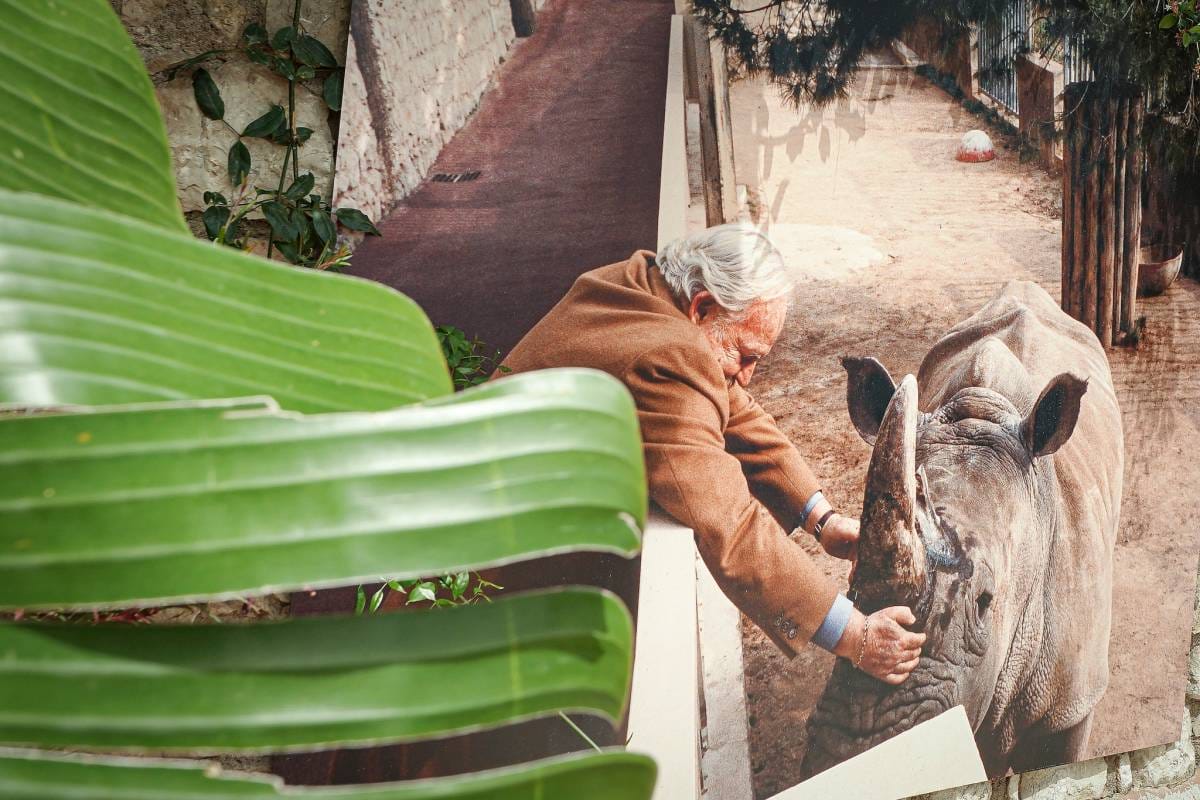HelloMonaco continues its series of articles, which illustrate the history and locations of the sculptures of Monaco. If you think that exceptional monuments should nearly always be in plain sight then you would be a little wrong. Sometimes you need to explore in almost-secret niches of the Principality to discover where some of the more outstanding masterpieces are hiding. This time, we will acquaint you with the district of San Roman, or, as it is called, La Rousse, which became the home of some of the most magnificent sculptures made by world-famous artists.

Starting a walk on Place des Moulins, your attention is drawn to a spectacular fountain with a column in the middle, which is located in the center of the square. Moreover, we can see the special effect created by the fountain, as if the silhouettes of people are climbing up the pillar, with a desire to touch the sky. Get closer, and look at the name of this chef d’oeuvre on the accompanying sign: “The Column of Life”.

This work was realised by the well-known Monaco sculptor, Emma de Sigaldi, in 1991 – who also happens to be the author of the statue of the Olympic diver, located opposite the Olympic pool in the port of La Condamine. Curiously, the fountain is not the only sculpture of de Sigaldi, located in the area of San Roman. Standing by the “Column of Life”, within view, is a mini-park Trocadero. Making a small tour there, you will stumble upon the sculpture of a woman with two children; one baby is in the arms of the mother and another one is gently gripping her by the waist. The result of Emma’s typically creative work, it is called “Motherhood”. Emma de Sigaldi (1910-2010) was a fairly well-known personality in the Principality. Starting her career with the Munich ballet, she won the title of prima ballerina. A little later, the artist met her future husband, Felix de Sigaldi, with whom she moved to Monaco. Meanwhile, Emma tried her hand at sculpture, even gaining the attention of Grace Kelly. The artist adorned the Principality with her creations, which are highly appreciated today. Her career became very international, with expositions all around the world, in Paris, Prague, Florence, Milan, Hong Kong, São Paulo, Rome, Osaka, St. Petersburg and Berlin.

Walking in the Trocadero Park, you will surely stumble upon yet another amazing sculpture made of marble, or rather a torso named “L’eveil” created in 1984. The author of the work of art is Blake W. Ward (born 1956), a Canadian Contemporary sculptor, and, perhaps, one of the few sculptors who has his own creative studio in Monte Carlo. Most of the time this sculptor creates works out of bronze or Italian marble. In his career, Blake has already created more than 100 sculptures, divided into 3 different thematic groups: fine traditional sculpture, “Fragments”, or distorted sculptures, and, “Spirits”, images of angels and phantoms. Obviously, the statue from the park on the Boulevard des Moulins, belongs to the first category – fine traditional works. “L’eveil” symbolizes the author’s vision of idealized female beauty and it even resembles Aphrodite of Milos.

Continuing our acquaintance with the sculptures of the La Rousse neighbourhood, we continue our gaze from Boulevard des Moulins toward Larvotto promenade. There, in a small niche, you will see another incredible fountain, with red-orange miniature tiles in the background. This immense sculpture is called “Sheaf” (“La Gerbe”). The metal construction really looks like a Sheaf, from the tops of which water flows. Water, in turn, is partly imitated by the use of very narrow chains. This creation is dated 1972, and was performed by Guy Lartigue. The sculptor in his portfolio has a lot of sheaves in different sizes, but, as a giant-like construction, it was presented only in Monaco in this form.

For the more adventurous, La Rousse has another surprise in store, but to see it you need to make a 15-minute walk along the Boulevard d’Italie. Reaching the final crossing, your gaze will fall on giant magnolia flowers, which seem to have been hidden in a small flower bed by the road. At first, it’s hard to believe that the flowers are not alive, because they are depicted so realistically! White and violet shades of half-opened buds leave no one unmoved. The Japanese magnolia is a creation of an Alabama sculptor named Fred Nall Hollis. It was made in 2008 and has been gifted by the author to the well-known Monaco businessman Michel Pastor. For Fred, Salvador Dali served as an inspiration. You can also see influences of American psychedelic art, impressionism and Japanese painting in his work. What’s more, Nall is not only a famous sculptor, but also a talented mosaic artist, painter and designer. “Japanese magnolia” in Monaco is the result of a unique artistic technique: Nall combines 2-D washed lines of painting and a 3-D sculpture effect; this ingenuity gives a sense of realism to the image. Today the artist lives and works between Monaco, Alabama and Vence, France, where he is the coordinator for the N.A.L.L. Art Association; here young artists are being trained and educated by Nall. It’s important to note that for some of the student learning art here is help in their recovery from alcohol and drug addiction.
Our walk is coming to an end, but our readers should not be at all dismayed as there are even more fascinating and extraordinary discoveries from the world of fine art in Monaco yet to come.








